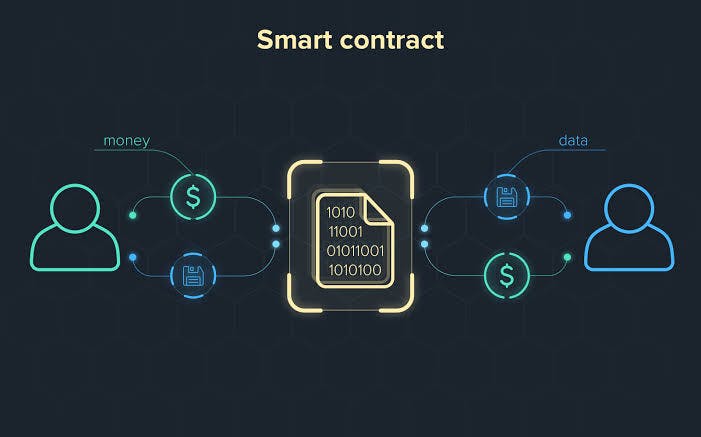Navigating the Ethereum Ecosystem: Smart Contracts and Oracles Unveiled
The blog which will introduce you to the EVM based blockchain.
Introduction
In the dynamic realm of blockchain technology, Ethereum stands tall as a pioneer, reshaping the landscape of decentralized transactions. At the core of Ethereum's transformative power are smart contracts and oracles, two pillars that redefine the capabilities of decentralized applications (DApps).
In this blog, let's embark on a journey to uncover the essence of Ethereum, exploring the dynamics of smart contracts, and understanding the pivotal role that oracles play in connecting the blockchain with the real world.
Ethereum: Beyond Digital Currency
Ethereum, conceived by Vitalik Buterin in 2015, transcends the traditional boundaries of cryptocurrencies. It's a decentralized platform that not only facilitates digital currency transactions but also acts as a global computer for executing smart contracts. Unlike Bitcoin, Ethereum's blockchain is a canvas for a myriad of decentralized applications.
Smart Contracts: Code-Based Agreements

Smart contracts are the digital architects of Ethereum, embodying self-executing contracts with their terms coded directly into the blockchain. These contracts automate and enforce agreements, eliminating the need for intermediaries and enhancing transparency.
Developers employ languages like Solidity to craft these contracts, defining rules and conditions that trigger specific actions on the Ethereum blockchain.The magic of smart contracts lies in their versatility.
They power everything from financial transactions to the creation of decentralized autonomous organizations (DAOs), revolutionizing industries and empowering individuals in trustless interactions
The Essential Role of Oracles

While smart contracts excel in managing on-chain data, oracles play a crucial role in extending their reach to the real world. Acting as bridges, oracles fetch and deliver external data be it stock prices, weather conditions, or sports scores to smart contracts. This integration of off-chain data empowers smart contracts to respond dynamically to real-world events, expanding their applications significantly.
Yet, the challenge lies in ensuring the security and reliability of oracles to prevent data manipulation. As the link between the blockchain and the external world, oracles are central to the adaptability and real-world relevance of smart contracts.
Real-world Impact: Use Cases
The synergy between Ethereum, smart contracts, and oracles has unleashed a wave of innovation. Decentralized Finance (DeFi) platforms leverage smart contracts for lending, borrowing, and trading, while oracles ensure these contracts are informed by real-time market data.
Non-Fungible Tokens (NFTs), representing unique digital assets, thrive on the Ethereum blockchain, fueled by the capabilities of smart contracts.
Conclusion:
In conclusion, Ethereum's success narrative is intricately woven with the threads of smart contracts and oracles. As we navigate this dynamic landscape, it's evident that the intersection of blockchain technology, decentralized applications, and real-world data integration holds immense potential.
Together, they promise a future where trust and transparency redefine our digital interactions, paving the way for a new era of decentralized innovation.
This is just the introduction to the Ethereum, we will be diving deep in the upcoming blogs.
There you will understand all these concept deeply with real world examples. Shortly, we will also have some hands on practice to make smart contracts and deploy it on Ethereum wallet.
